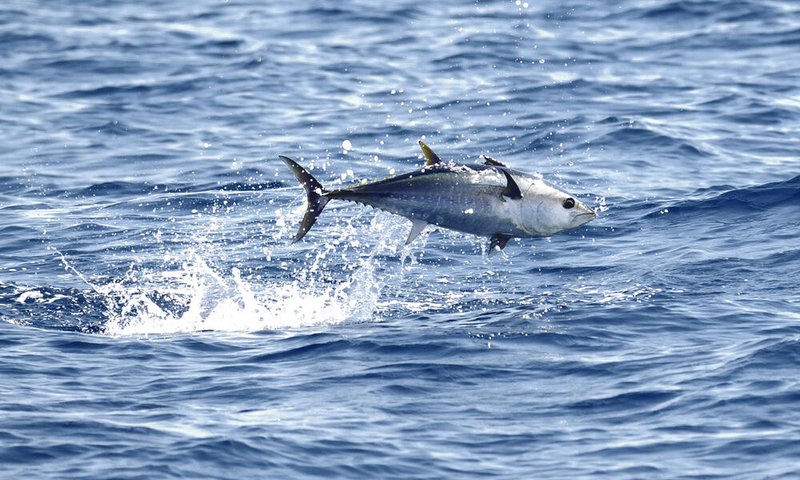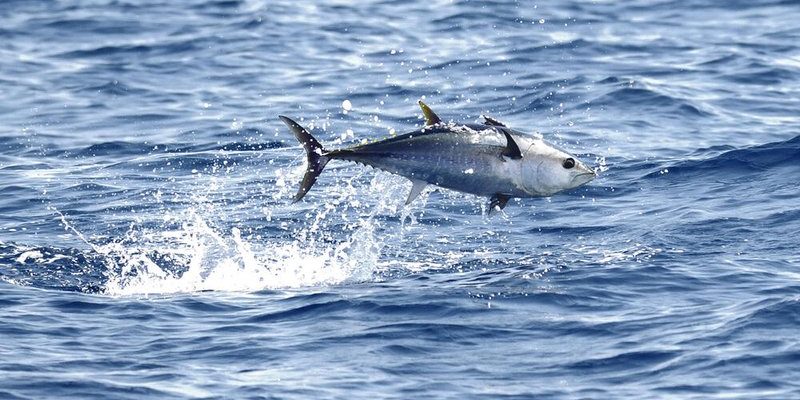
In this article, we’ll dive into the current state of tuna populations, explore the efforts being made to conserve them, and examine the impact of overfishing and habitat loss. As we traverse these waters together, you’ll gain a clearer picture of why protecting these incredible fish matters, not just for marine ecosystems but for humanity as a whole.
Understanding Tuna Species and Their Habitats
*You might be wondering*, what exactly is a tuna? There are several species of tuna, each with its own unique features and habitat. The most well-known types include the bluefin, yellowfin, and albacore tunas. Bluefin tuna, for instance, is famous for its size—it can weigh up to a staggering 1,500 pounds! These fishes primarily inhabit warm waters, ranging from the Atlantic to the Pacific Oceans.
Tunas are also migratory fish, often traveling long distances to find food and reproduce. Just think of them as the athletes of the ocean—constantly on the move, covering vast stretches of water. They prefer open seas and are often found at depths of 1,000 feet or more, depending on the species. This migratory behavior makes them particularly vulnerable to overfishing, as they cross international waters where regulations can vary.
Understanding their natural habitat is crucial because changing ocean conditions, like rising temperatures and acidification, can affect the availability of prey species and the overall health of tuna populations.
The Threat of Overfishing
*Honestly,* one of the biggest threats to tuna populations is overfishing. Historically, tunas have been targeted for their delicious meat, leading to unsustainable fishing practices. Commercial fishing fleets use massive nets and longlines, catching tunas at alarming rates. It’s a bit like trying to catch a soccer ball with a giant vacuum cleaner!
According to estimates, some tuna stocks have already declined by over 90% in the last few decades. Overfishing disrupts not only the tuna populations but also the entire marine food web. With fewer tunas, other species, like sharks and sea turtles, may struggle to find enough food, leading to further imbalances in the ecosystem.
To combat this problem, various organizations and governments are working to implement stricter fishing quotas and promote more sustainable practices. The goal is to allow tuna populations to recover while still meeting the demand for their meat.
Conservation Efforts and Initiatives
*Let me explain,* there are several exciting conservation efforts aimed at protecting tunas. One of the most notable is the establishment of Marine Protected Areas (MPAs). These areas serve as safe havens where fishing is restricted or prohibited, allowing tuna populations to thrive. Think of it as a refuge for fish, where they can grow and reproduce without the pressure of being caught.
Additionally, organizations like the International Seafood Sustainability Foundation (ISSF) and the World Wildlife Fund (WWF) are actively working with fisheries to promote sustainable fishing practices. This collaboration helps ensure that tuna fishing is not only economically viable but also environmentally responsible.
Another innovative approach is the use of technology, like satellite tracking, to monitor tuna movements and catch rates. By gathering data on tuna populations, scientists can make more informed decisions about management and conservation strategies. This cutting-edge tech is allowing us to better understand the habits of these incredible fish.
The Role of Consumers in Tuna Conservation
*You might be surprised* to learn that consumers play a vital role in tuna conservation. By making informed choices, we can influence the fishing industry to prioritize sustainability. One way to do this is by looking for labels like Marine Stewardship Council (MSC) or Aquaculture Stewardship Council (ASC) when purchasing tuna. These certifications indicate that the fish was caught or farmed using sustainable methods.
Another option is to embrace alternatives to traditional tuna species. Lesser-known fish varieties can be just as tasty and are often sourced more sustainably. By opting for these alternative seafood choices, you help reduce pressure on vulnerable tuna populations and support healthier ocean ecosystems.
Let’s not forget about the power of advocacy. Supporting organizations that fight for ocean conservation or participating in local beach clean-ups can have a significant impact. Every little action counts, and collectively, we can make a difference.
The Impact of Climate Change on Tuna Populations
*Here’s the thing:* climate change doesn’t just affect us on land; it has profound effects on marine life, including tunas. Rising ocean temperatures can alter tuna habitats and disrupt their migratory patterns. As the oceans warm, certain fish species may shift their ranges, potentially leading to increased competition for food.
Moreover, climate change can affect the availability of prey species, like smaller fish and squid. Tunas depend on these prey to survive, so any changes in their populations can directly impact tuna health and reproduction. It’s a domino effect, where one shift in the ecosystem leads to a cascade of consequences.
Efforts to combat climate change, such as reducing carbon emissions and promoting renewable energy, can also benefit tuna conservation. Protecting the ocean’s health is essential for sustaining tuna populations and the biodiversity of marine ecosystems.
What’s Next for Tuna Conservation?
*So, what’s next?* The future of tuna populations hinges on a collective effort from governments, organizations, and consumers. Ongoing research is critical for understanding tuna life cycles and populations. By investing in science, we can continue to implement effective management strategies.
Additionally, international cooperation is more important than ever. Because tunas are migratory and cross many national boundaries, countries must work together to create cohesive fishing regulations. Organizations like the Commission for the Conservation of Southern Bluefin Tuna (CCSBT) are vital in facilitating these discussions.
Public awareness is also key. The more people understand the challenges tunas face, the more likely they are to support conservation efforts. Sharing knowledge and advocating for sustainable practices can help ensure that future generations can enjoy the beauty of these magnificent fish.
Closing Thoughts
Tunas are not just valuable for their meat; they are a pivotal part of our ocean ecosystems. Their decline would mean more than just a loss at the dinner table—it could disrupt the delicate balance of marine life. By understanding the threats they face and the ongoing conservation efforts, we can all play a role in ensuring these incredible fish have a fighting chance.
As we wrap up our conversation, take a moment to reflect on how small choices can lead to broader changes. Whether it’s choosing sustainable seafood or supporting conservation organizations, we’re all part of the story that shapes the future of our oceans. Let’s make sure it’s a good one.

